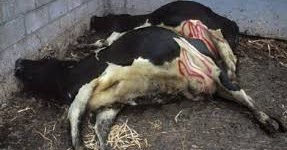Scholsey
Member
- Location
- Herefordshire
What’s the current thinking on TB in deer passing to cattle? Some of the parcels I go on I can see 50+ deer with the thermal, not a fan of venison or deer stalking, looks like the equivalent of shooting 6 month old heifers to me!There was thought a few years ago, that because of the possibility of soil contamination by earthworms, control of Lumbricus terrestris would suffice. So the solution? Wipe out earthworms. Nature's min till soil excavators. Wonderful. You really couldn't make it up.
Link to that little gem at the end of this 2016 posting:

End of the Summer term.
It seems that around July and August every year, a raft of papers are produced, their authors gad off with buckets and spades, the BBC medi...bovinetb.blogspot.com
The best disinfectant is a bullet of course, but while m.bovis is a wax jacketed survivor, UV light (sunshine) does the job very well in a few hours. But half cooked bacteria, are more lethal than fresh.









